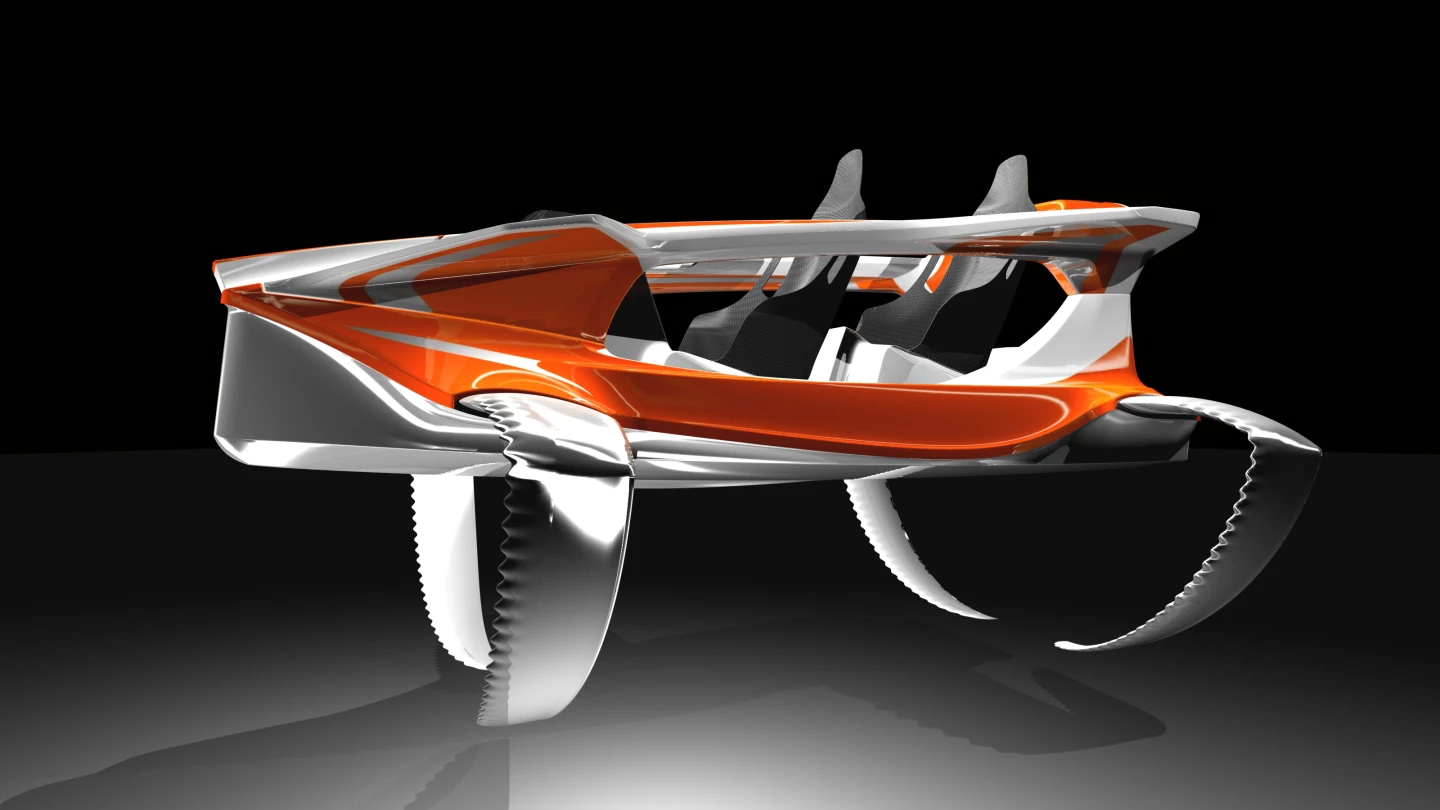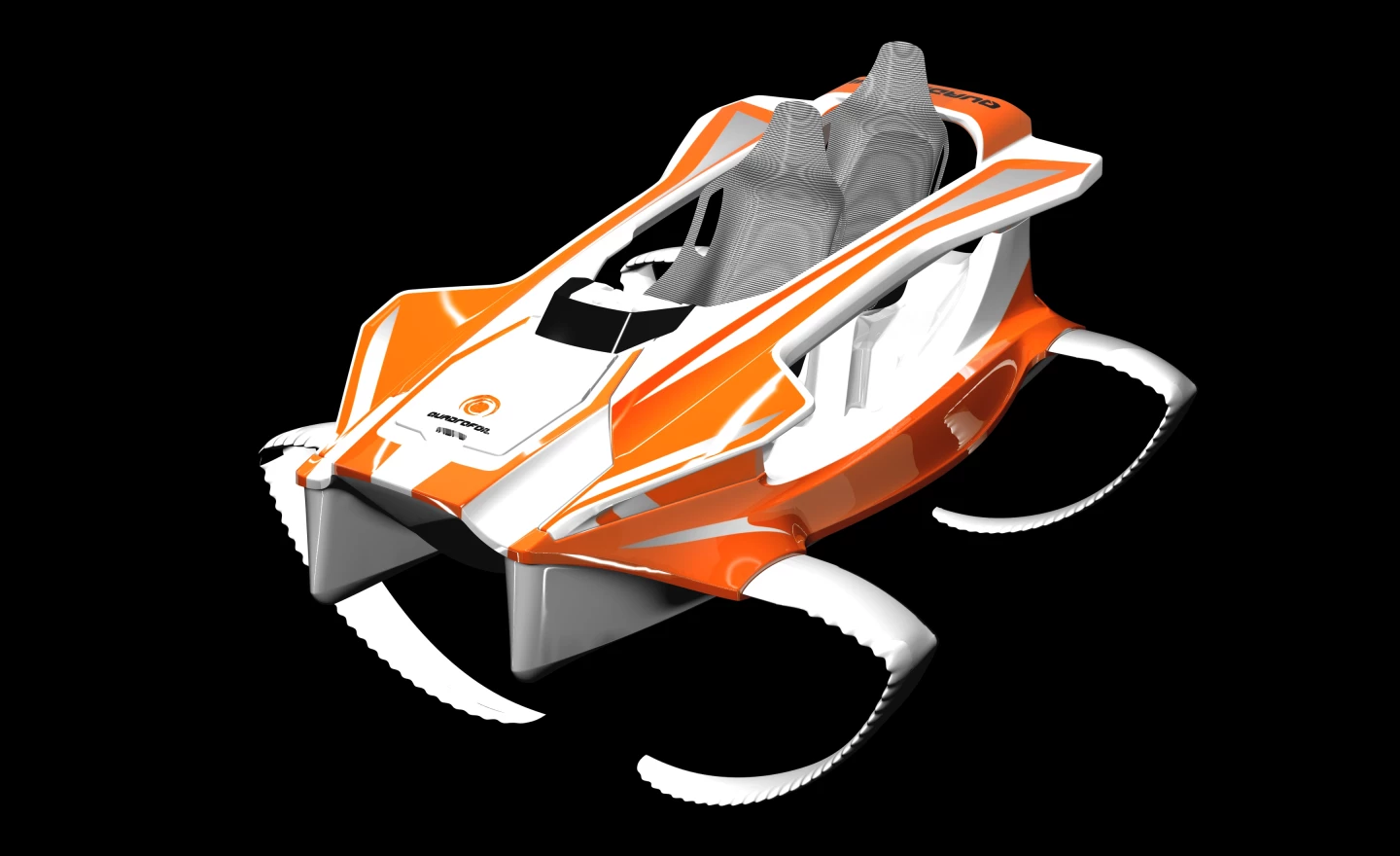The field of motorized recreational toys is currently undergoing a renaissance due to the availability of high performance electric motors, new materials, computer aided design, new manufacturing techniques and a new wave of educated designers with no understanding of the word "cannot."
The Quadrofoil is a prime example of this phenomenon, having been created by three young Slovenian designers inside six months, and launched at Slovenia's Internautica exhibition last week.
So successful has been the response from the public that a short production run of 100 units will be completed before the year is out, giving the Quadrofoil a concept to market time of less than 12 months, and with some ambitious plans for faster future models and perhaps even a race version. The company is now in capital raising mode to fund production plans for more than 10,000 units a year from 2013 onwards.
The retail price of the Quadrofoil will be EUR15,000 (US$19,100) and a spot on the waiting list can be secured with a EUR5000 (US$6,370) deposit.
What you get is a two-person electric hydrofoil which offers completely silent running and a 40 km/h (25 mph/22 knot) top speed, along with the fast-turning the dynamics of a "sports car for the water."

One of the greatest advantages of the Quadrofoil is its lack of emissions and hence impact on delicate marine ecosystems. By comparison, most Personal Watercraft with the throttle wide open will burn a liter of gasoline per minute and dumping that quantity of burned hydrocarbons into a river or lake is unsustainable and unjustifiable in the long term.
Another advantage of the Quadrfoil over PWCs (and plus for the marine environment) is that in addition to being silent, it does not create a wake at speed, as it does not displace a significant amount of water.
Due to the remarkable efficiency of hydrofoils, it achieves its 25 mph top speed with just one 3.7 kW electric motor, and thanks to its lightweight (150 kg - 330 lb) carbon fiber and Kevlar body and in-built 4.5 kWh lithium batteries, it has a range of 100km (62 miles). It can also be recharged from a domestic powerpoint in an hour, or via the flexible solar panels which come with each Quadrofoil and are designed to be folded inside the watercraft as an emergency power source, or to top up the battery when "off the grid."

Though the term hydrofoil refers to any fin, keel, rudder, flipper, wing or foil which operates in water, man-made or otherwise, it is commonly used for the wing-like structure mounted on struts below the hull of a variety of boats. It is also used to refer to the boat to which hydrofoils are attached.
The hydrofoil's efficiency comes from its ability to lift a boat out of the water during forward motion, reducing hull drag to near zero into the bargain. Without all that surface area upon which turbulence and drag can act, there's only the much smaller surface area of the hydrofoils and aerodynamic drag to limit top speed.
This means the speed of a boat equipped with hydrofoils is either greatly increased, or the amount of power required to propel it is greatly reduced, in comparison to a boat that does not have hydrofoils.
It is hence not surprising that the world sailing speed record, and the human-powered water speed record both belong to watercraft with hydrofoils.
Going one step further, the Slovenian team used biomimicry to develop the shape of the hydrofoils and claim to have been so successful that the foils create less drag at speed than the air resistance of the hull above the water surface!

Another benefit of a hydrofoil is the comfort factor for passengers - as once the hull has been lifted above the waves, the incessant pounding disappears and the boat feels like it is flying. Indeed, a hydrofoil is a wing that "flies" in water, and the flight of the Quadrofoil is only disturbed by waves greater than 20 inches (50 cm).
The designers claim the Quadrofoil is unsinkable, and it is designed to always return to upright should you manage to overcook it in a tight turn.
One of the key enablers of the machine was the development of a hydrofoil-folding mechanism, which enables the six kilogram hydrofoil legs to be adjusted during use, and to be folded upwards by means of a manual or electric winch before entering a swimming area or approaching shore. Once the hydrofoil legs have been turned upwards, the Quadrofoil has a draft of just 6 inches (15cm).

The folding legs can also be removed, making for an easily transportable machine at 150 kg and 10 feet (3 m) in length.
Due to the low power of the 3.7 kW motor, the Quadrofoil belongs to a category of watercraft that does not require registration, a PWC license, insurance or navigation permit in the EU.
The future looks bright for the Quadrofoil and already development of a much faster machine is underway. The current foils are suitable for speeds up to 80 km/h and, in cooperation with Fakulteta za Energetiko (Faculty of Energy Technology) in Krškothe, the company is developing its own outboard motor and propeller with variable pitch which it believes will be one of the most efficient in the world. The propelor and 12 kW outboard will be ready later this year, presumably meaning that a version will be available in the not-too-distant future with a top speed more than double the current version.
From a recreational craft through to a silent, fast craft for special forces, the Quadrofoil looks to have every chance of commercial success. Distribution, dealership and investment inquiries will be welcomed from all countries according to the company. Source: Quadrofoil





















